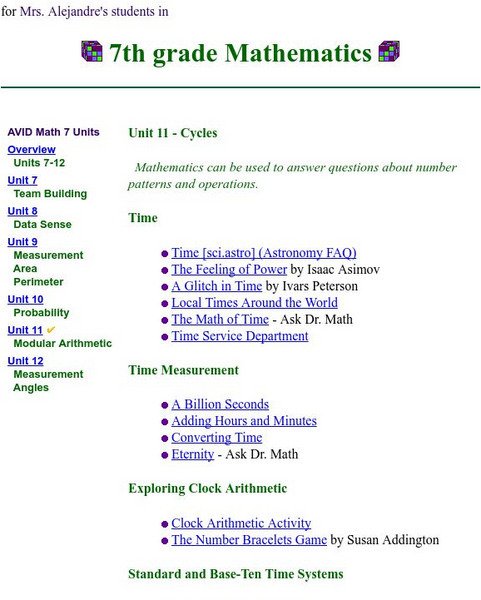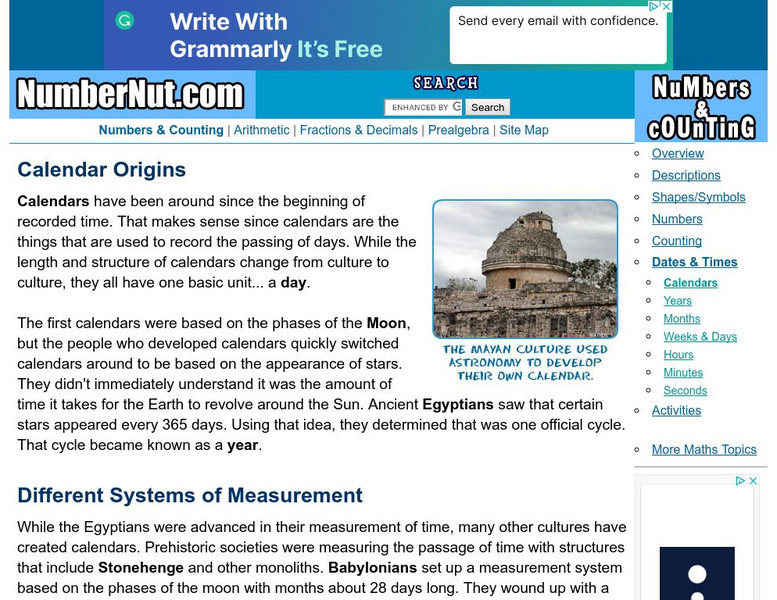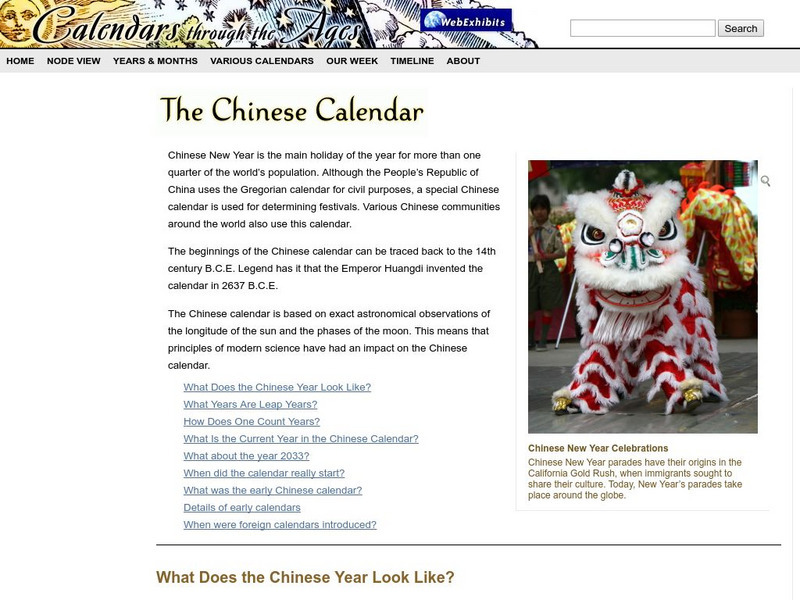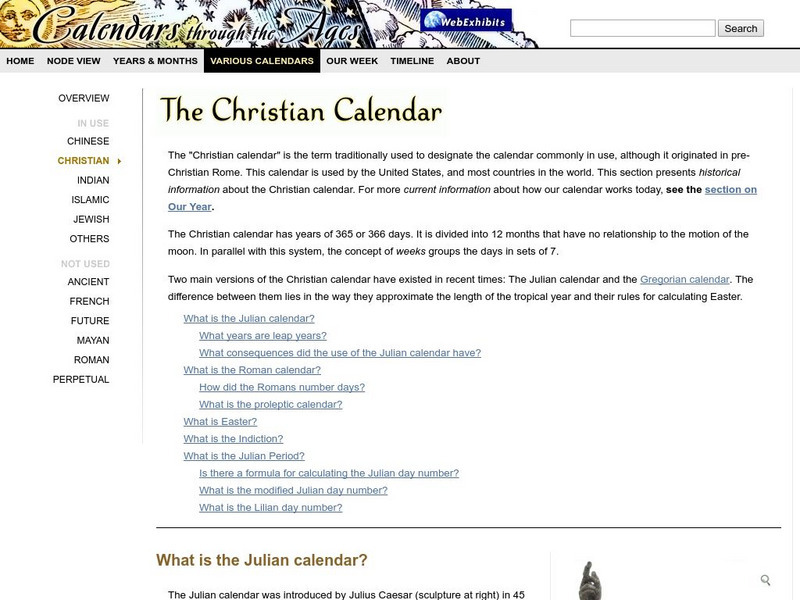Other
Western Washington University: Leap Year
It takes the entire page but by the end of it, you will understand the whys and whens of Leap Year Day.
TED Talks
Ted: Ted Ed: The Leap Year Explained
Every four years, we gain an extra calendar day. Neil deGrasse Tyson explains the science behind the leap year. [3:22]
Mocomi & Anibrain Digital Technologies
Mocomi: What Is Leap Year?
Learn when and why we have leap years.
Math Is Fun
Math Is Fun: Years
The mathematics resource discusses years. Students review the concept using the provided notes and then answer questions to check for comprehension of the topic.
National Council of Teachers of Mathematics
The Math Forum: Seventh Grade Mathematics: Cycles
Teachers can use this resource for creating interesting lessons about time and time measurement. There are articles about leap year, converting time, as well as other links for further research. An interdisciplinary project about an...
Read Works
Read Works: A Leaping Birthday
[Free Registration/Login Required] A literary text about a girl named Catherine who was born on February 29th. A question sheet is available to help students build skills in reading comprehension.
NumberNut
Number Nut: What Is a Year?
Discover the relationship between mathematics and a year. Examine key vocabulary and number facts that will help you understand why learning about years can help build your number sense. This lesson also includes two interactive games.
National Geographic
National Geographic: 45 Bce: Julius Caesar Takes a Leap
Why do we have an extra day at the end of February every four years? We have Julius Caesar to thank! Read this short explanation about how the calendar kept falling out of step with the seasons and Caesar's solution to the problem.
Open Library of the Internet Archive
Open Library: Lacy's Flying Leap
This ebook version of Linda Manka's Lacy's Flying Leap has been made available in multiple formats by the Open Library. Editions of the full novel, organized by year of publication, may be accessed here.
Wikimedia
Wikipedia: The Hebrew, or Jewish, Calendar
An encyclopedia entry about the Jewish calendar with information on the history of the calendar as well as on the modern Jewish calendar, which dates from 3761 BCE. Names of the months, length of the months, leap years, and similar...
NumberNut
Number Nut: Calendar Origins
History and mathematics merge in this lesson that explores the origin of the calendar. Learn how it all got started in this detailed lesson that includes a simple months of the year game and a more challenging time conversion game. Both...
Institute for Dynamic Educational Advancement
Web Exhibit: The Islamic Calendar
This website gives very detailed information about all aspects of the Islamic calendar.
Institute for Dynamic Educational Advancement
Web Exhibit: The Chinese Calendar
This website gives very detailed information about all aspects of the Chinese calendar.
Institute for Dynamic Educational Advancement
Web Exhibit: The Christian (Julian) Calendar
This website gives very detailed information about all aspects of the Christian (Julian) calendar.
Institute for Dynamic Educational Advancement
Web Exhibit: The Jewish Calendar
This website gives very detailed information about all aspects of the Jewish calendar.
Geography 4 kids
Geography4 kids.com: Earth Around the Sun
Find out what all results from Earth revolving around the sun every 365 days as well as the rotation of the Earth every 24 hours.
Curated OER
Unesco: Papua New Guinea: Kuk Early Agricultural Site
Kuk Early Agricultural Site consists of 116 ha of swamps in the western highlands of New Guinea 1,500 metres above sea-level. Archaeological excavation has revealed the landscape to be one of wetland reclamation worked almost...
Other popular searches
- Leap Year Day
- Leap Year Sayings
- Leap Year Poems
- Leap Year History
- Leap Year February 29
- Leap Year Activities
- Leap Year Lessons
- Math Lesson Leap Year
- Leap Year Kindergarten
- Leap Year Lesson Plans















